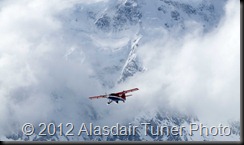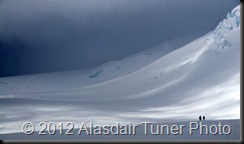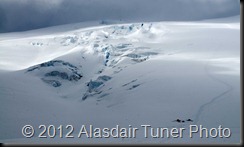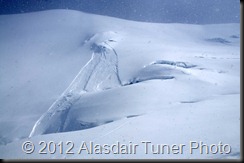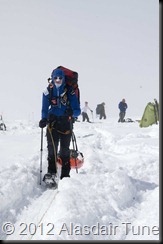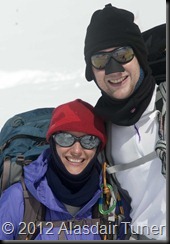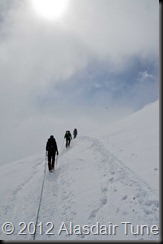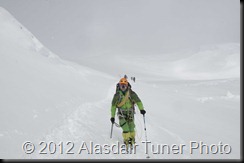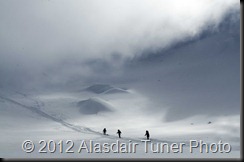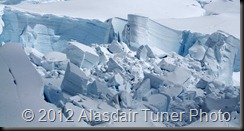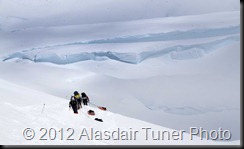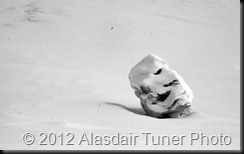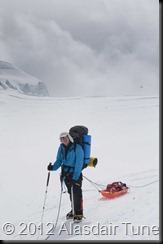I have been trying to photograph all of the wildlife I have seen in the Cascades for a while now. Although my photo collection is far from complete, I do feel it is large enough for a blog post. So here it is. wildlife of the Cascades Alpine areas.
Pika
The Pika is a small mammal in the
lagomorphs family (rabbit and hare) found both below tree line and in the alpine regions. It is rat sized and can often be seen and heard in scree and boulder fields. Their call is best described as a loud squeak. They are pretty hard to get close to so I don't really have many good photos of them. Pika do not hibernate, they live under the snow all winter continuing to feed on the vegetation on the ground.
Hoary Marmot
Marmots are common in alpine areas of Washington and I have spent many hours photographing them. Their call is a loud whistle, which serves as communication and more importantly a warning to other marmots about predators.
Cascade FoxThe Cascade fox is a common resident around Mt. Rainier as many of them are habituated to humans.
Deer MouseAny climber who has spent any time at a popular camp and did not clean up their food properly has paid for it with less sleep due to the constant nighttime movements of the deer mouse.
 |
| A deer mouse hiding the the bottom of my tent. |
Bushy-tailed WoodratAny nighttime encounter with a deer mouse pales in comparison to the legendary bushy-tailed wood rat. There may be no other animal quite as persistent and capable of ruining a night of sleep. My encounters with this large rodent have always been memorable. I once had a pair of socks stolen by one of these guys in the middle of the night. We were in the Picket Range and I had not brought a second pair. In another encounter I had some crawling all over my truck while I was trying to sleep in it while on a trip in Eastern Washington. It was an evening of almost constant banging and loud scurrying. These things certainly do not have much grace.
I dont have a photo of one of these alive, and I cant really bring myself to post a picture of a dead one.
You can find a photo here
Mountain Goat
One of the more lovable of our alpine dwelling friends. It is rare that I do a trip to the Enchantments, Washington Pass or the Cache Col side of Cascade Pass without seeing some goats.
Black BearYes they do spend time above tree line in the alpine areas of the Cascades. No I don't have a good photo of one.
Grizzly Bear (Brown Bear)It is now official that there are grizzly bears in the North Cascades. The photo that confirmed them was shot on Sahale Arm near Cascade Pass.
Chipmunk
Found at most camps in the pacific Northwest at or below treeline.
Varied Thrush
Often heard, but rarely seen, the varied thrush is one of the most common birds that climbers will share the approach trail with. They are about the size of and have similar shape as a robin (which is also a thrush).
Click here for a page at which you can hear its call.
Anna's HummingbirdI am kind of lying here, because it is more common for climbers to see ruby-throated hummingbirds, but I don't have a picture of one. Hummingbirds are very common in alpine areas of Washington.
American CrowCrows are less common visitors to the alpine than ravens, but do occasionally make their way above tree line.
Winter Wren
I am still working on getting a photo of a Winter Wren. They do not tend to move above tree line, but are very common in sub-alpine forest.
This is another bird with a distinctive song that is often heard on approach hikes. More information, a recording of the call, and a photo can be found
here.
Hermit Thrush
The Hermit Thrush is another bird that is often heard but rarely seen. Their call is one of the most beautiful and haunting of all the northwest birds. A hike in the northwest would not be the same without the sound of this bird. It is most often heard right at treeline in the mountain hemlock and sub-alpine fir.
Click here for a link to a page where you can hear its call.
 |
| I know this photo is terrible, but its a hermit thrush and they are hard to get close to. |
Gray JayKnown to many back country users as camp robbers. Chances are if you have stopped for a snack on a popular trail you have had one of these birds land close to you.
 |
| Pretty much the easiest bird to photograph. |
Clark's NutcrakerSimilar in color to the grey jay and often mistaken for them. They are a bigger bird and do not do as much scrounging for climber food as the jay does. They are more common on the eastern crest of the cascade mountains around Colchuck Lake and Washington Pass. They are also very loud squawking birds.
For more information and to hear their call click here.
Dark eyed Junco
I can't really believe I don't have a photo of one of these yet. They are all over my front yard and they are super common visitors to the sub-alpine fir and mountain hemlock.
More info and photos can be found here.
Mountain Chickadee
The Mountain Chickadee is a close relative of the black-capped chickadee. It is pretty common in the sub-alpine areas just like the Dark-eyed Junco.
Horned LarkHorned Larks are often seen on glaciers in small groups feeding on insects in the snow. This bird fits in the often seen but rarely close enough to identify. Some day I will get a good photo of one, but until them I will stick with this one.
Ok, I have an updated photo from Eastern Washington. I left the original bad one because it shows a bird feeding on the glacier.
American PipitThe American Pipit is a less commonly seen bird in the alpine areas where climbers go. They breed in above tree line. I have only seen them on occasion and usually only in places where climbers do not go very often.
Mountain Bluebird
A fairly common resident of the Eastern Cascades.
Grey Crowned Rosy Finch
The Grey Crowned Rosy Finch is also seen fairly often on glaciers feeding on insects. Its a little smaller than the Horned Lark. It looks a lot like a sparrow until you get close enough to see the grey coloring around the back of the neck and on the cheeks.
RavenIt seems every climber has a raven story. These are usually related to some type of amazing feat where the raven has opened up a zipper and removed some food.
Sooty Grouse
Common in alpine areas in the late summer. It seems like Mt. Baker is a pretty common place to see these guys.
White Tailed PtarmiganWhite tailed ptarmigans are fairly common in the Cascades above tree line. Their distinctive chicken like call is often heard right at dusk, as the birds come together in pairs and move to the center of glaciers or snow fields to spend the night. In the winter these birds have completely white plumage. Unfortunately I don't have a photo of any in their winter plumage.
A site with more information and a recording of their call is
here.
Golden Eagle
Maybe it because I am better at identifying them, but in the last few years I have have seen a lot of Golden Eagles hunting in alpine areas. Each time I have seen them there has been more than one and they have been hunting as a pair. Marmots seem to be a favorite food of these birds.
Northern HarrierI have only seen a norther harrier once, and it was on Mt. Baker. Like the Golden Eagle it was probably hunting marmots.
Peregrine Falcon
More common at popular rock climbing areas than in the alpine areas. It is still not unheard of to see a peregrine falcon above tree line.
OspreyAlthough not common on the west side of the Cascades the osprey is a very common bird of prey on the eastern slopes. They will sometimes fish in alpine lakes along the eastern crest of the Cascades. I have seen them above Blue Lake at Washington Pass and in the Alpine Lakes Wilderness area. They are very common at Colchuck Lake.
 Wednesday, June 27, 2012 at 3:52PM
Wednesday, June 27, 2012 at 3:52PM  AAI,
AAI,  Alpine mountaineering,
Alpine mountaineering,  Mount,
Mount,  West Buttress,
West Buttress,  climb,
climb,  climbing,
climbing,  denali,
denali,  guide,
guide,  guided,
guided,  mckinley
mckinley 